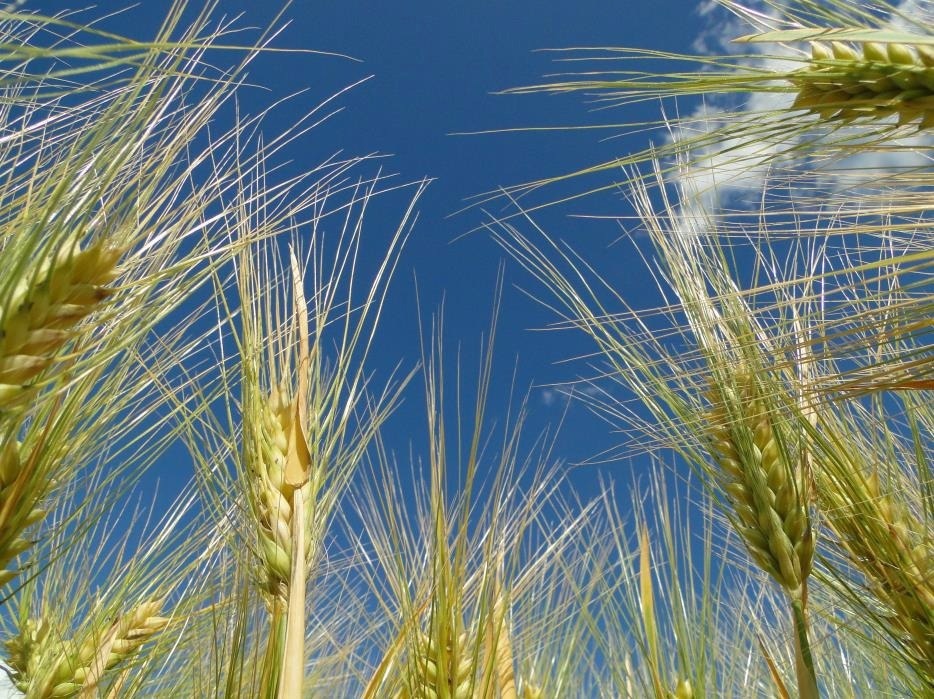Flowering plants with indeterminate inflorescences frequently generate more floral structures than needed. An international research team led by the IPK Leibniz Institute discovered that floral primordia initiations in barley are molecularly distinct from grain maturation.
 IPK researchers unveiled a previously unrecognized mechanism by which signals in the vasculature of the barley inflorescence control plastid differentiation and nutrient signaling. Image Credit: IPK Leibniz-Institute/ T. Schnurbusch
IPK researchers unveiled a previously unrecognized mechanism by which signals in the vasculature of the barley inflorescence control plastid differentiation and nutrient signaling. Image Credit: IPK Leibniz-Institute/ T. Schnurbusch
Although flowering-time genes control initiation, floral growth is controlled by light-signaling, chloroplast, and vascular developmental programs organized by the barley CCT MOTIF FAMILY 4 (HvCMF4), which is expressed in the inflorescence vasculature.
The results, which were published today in the journal Science Advances, shed light on the molecular basis of grain number determination in cereal crops.
It is critical for crop grain production to modify inflorescences with higher grain capacity. Selecting inflorescences with more branches or floral structures is a recurring goal. Natural or induced variants of genes impacting floral identity or meristem determinacy, for example, drastically influence floral primordium number.
Yet, due to the indeterminacy of meristems in temperate cereal crops like wheat and barley, excessive floral structures can result in a degeneration penalty.
On the other hand, environmental variations like light, temperature, and nutrition can amplify the expression of this reproductive potential. Raising the proportion of surviving florets/spikelets can boost cereal grain yield.
IPK researchers have discovered a previously unknown mechanism by which signals in the barley inflorescence vasculature influence plastid differentiation and nutrient signaling, supporting heterotrophic floral meristem development and reproductive success.
Their findings show that the vasculature’s circadian clock is essential for a timely transition from the floral primordia initiation state to the growth state.
The researchers discovered that roughly 40% of the initiated floral primordia set grains while the rest are aborted by performing large-scale floral meristem dissection and phenotyping, indicating an untapped yield potential.
We further show that the number of initiated floral primordia is largely determined by flowering time genes, but the fates of the distal floral primordia are controlled by at least three independent quantitative trait loci.”
Dr Yongyu Huang, Study First Author, Leibniz Institute of Plant Genetics and Crop Plant Research
He further stated, “We identified for the first time a vascular-expressed CCT Motif Family gene (HvCMF4) that is required for spikelet primordia growth and successful pollination.”
Furthermore, the researchers discovered that HvCMF4 operates precisely after the initiation of spikelet primordia by connecting the circadian clock from the inflorescence vasculature to govern the greening of adjacent tissue and hence autotrophic energy production.
Dr Huang added, “This grain number determination mechanism has not been described before and appears to be unique to the Triticeae species, which features early inflorescence greening during spikelet initiation and differentiation.”
Prof. Dr Thorsten Schnurbusch, head of IPK’s research group “Plant Architecture” and a Professor for Developmental Genetics of Crop Plants at Martin Luther University Halle, added, “Our study evokes a new avenue for boosting grain yield, highlighting the possibility of increasing grain number not just by gaining more floral primordia but also by convoying them until maturity.”
He concluded, “As barley is amongst the most important cereal crops in the world (number four after rice, maize, and wheat), better exploiting its grain yield potential can thus contribute to world food security and thereby directly help fight against hunger threats imposed by climate change, natural or war disasters.”
Source:
Journal reference:
Huang, Y., et al. (2023). A molecular framework for grain number determination in barley. Science Advances. doi.org/10.1126/sciadv.add0324